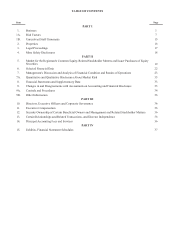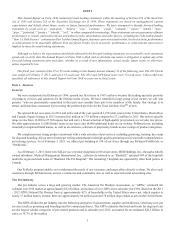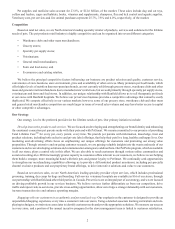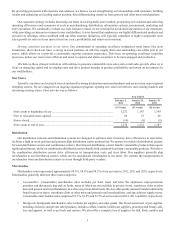Petsmart 2012 Annual Report Download - page 16
Download and view the complete annual report
Please find page 16 of the 2012 Petsmart annual report below. You can navigate through the pages in the report by either clicking on the pages listed below, or by using the keyword search tool below to find specific information within the annual report.8
The pet products and services retail industry is very competitive and continued competitive forces may adversely impact our
business and financial results.
The pet products and services retail industry is very competitive. We compete with supermarkets, warehouse clubs and other
mass and general retail merchandisers, many of which are larger and have significantly greater resources than we have. We also
compete with a number of specialty pet supply stores and independent pet stores, veterinarians, catalog retailers and e-commerce
retailers. The pet products and services retail industry has become increasingly competitive due to the expansion of pet-related
product offerings by certain supermarkets, warehouse clubs and other mass and retail merchandisers and the entrance of other
specialty retailers into the pet food and pet supply market, some of which have developed store formats similar to ours. We may
face greater competition from these or other retailers in the future, and changes in their merchandising and operational strategies
could impact our sales and profitability. In particular, if supermarket, warehouse club or other mass and retail merchandiser
competitors seek to gain or retain market share by reducing prices, we would likely reduce our prices on similar product offerings
in order to remain competitive, which may result in a decrease in our market share, sales, operating results and profitability and
require a change in our operating strategies.
We also have been able to compete successfully by differentiating ourselves from our competitors through providing a careful
combination of product assortment, competitive pricing, service offerings and unique customer experience. If changes in consumer
preferences decrease the competitive advantage attributable to these factors, or if we fail to otherwise positively differentiate our
customer experience from our competitors, our business and results of operations could be adversely affected.
Comparable store sales growth may decrease. If we are unable to increase sales at our existing stores, our results of operations
could be harmed.
We can make no assurances that our stores will meet forecasted levels of sales and profitability. As a result of new store
openings in existing markets, and because older stores will represent an increasing proportion of our store base over time, our
comparable store sales performance may be materially impacted in future periods. In addition, a portion of a typical new store's
sales comes from customers who previously shopped at other PetSmart stores in the existing market.
We may be unable to continue to open new stores and enter new markets successfully. If we are unable to successfully reformat
existing stores and open new stores, our results of operations could be harmed. Also, store development may place increasing
demands on management and operating systems and may erode sales at existing stores.
We currently operate stores in most of the major market areas of the United States and Canada. Our ability to be successful
with our store development efforts is dependent on various factors, some of which are outside our control, including:
• Identifying store sites that offer attractive returns on our investment notwithstanding the impact of cannibalization of our
existing stores;
• Competition for those sites;
• Successfully negotiating with landlords to achieve acceptable lease terms and obtaining any necessary governmental,
regulatory or private approvals;
• Timely construction of stores;
• Our ability to attract and retain qualified store personnel; and
• Our ability to reformat existing stores in a manner that achieves appropriate returns on our investment.
To the extent we are unable to accomplish any of the above, our ability to open new stores and hotels or reformat existing
ones may be harmed and our future sales and profits may be adversely affected. In addition, we can make no assurances that we
will be able to meet the forecasted level of sales or operate our new stores or hotels profitably.
The increased demands placed on existing systems and procedures, and on management by our store development plans, also
could result in operational inefficiencies and less effective management of our business and associates, which could in turn adversely
affect our financial performance. Opening new stores in a market will attract some customers away from other stores already
operated by us in that market and diminish their sales. An increase in construction costs and/or building material costs could also
adversely affect our financial performance.
Our leases are typically signed approximately 9 months before a store opens. As a result of that timing, we may be unable to
adjust our store opening schedule to new economic conditions or a change in strategy in a timely manner.
























